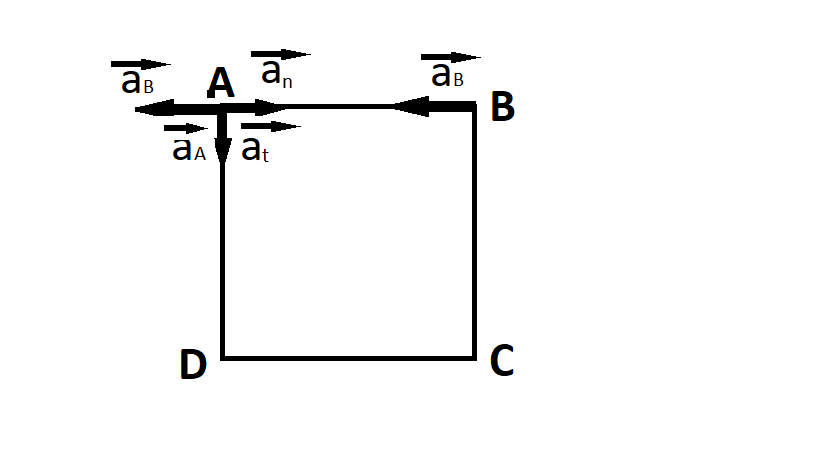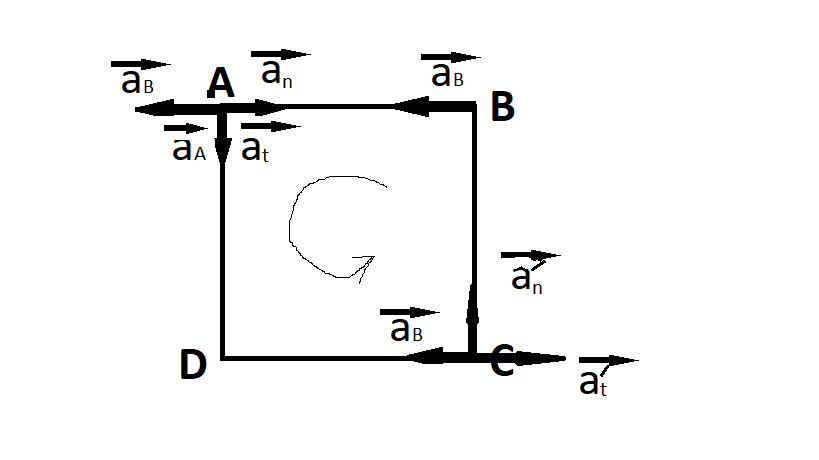Square plate
A square plate with side length can move freely on a frictionless table. At one moment, points and have accelerations of in the directions shown in the diagram.
Find the acceleration of point in
The answer is 16.
This section requires Javascript.
You are seeing this because something didn't load right. We suggest you, (a) try
refreshing the page, (b) enabling javascript if it is disabled on your browser and,
finally, (c)
loading the
non-javascript version of this page
. We're sorry about the hassle.
We'll assume that the plate is rotating with respect to B.
We have: a A = a B + a n + a t
Where a n is the centripetal acceleration of A and a t is the tangentical acceleration of A :
And so from the figure we can find that:
a n = a B = a => ω 2 ∗ A B = a (centripetal acceleration formula)
a t = a A = a => γ ∗ A B = a => γ = A B a (linear and angular acceleration relationship).
From that we can find the rotating direction of our plate.
With the rotating direction given, we can determine the direction of the accelerations of C.
For point C we also have: a C = a B + a n ′ + a t ′
With a n ′ = ω 2 ∗ B C = B C a ∗ B C = a and a t ′ = γ ∗ B C = a
And so we have a C = a n ′ = a = 1 6 c m / s 2